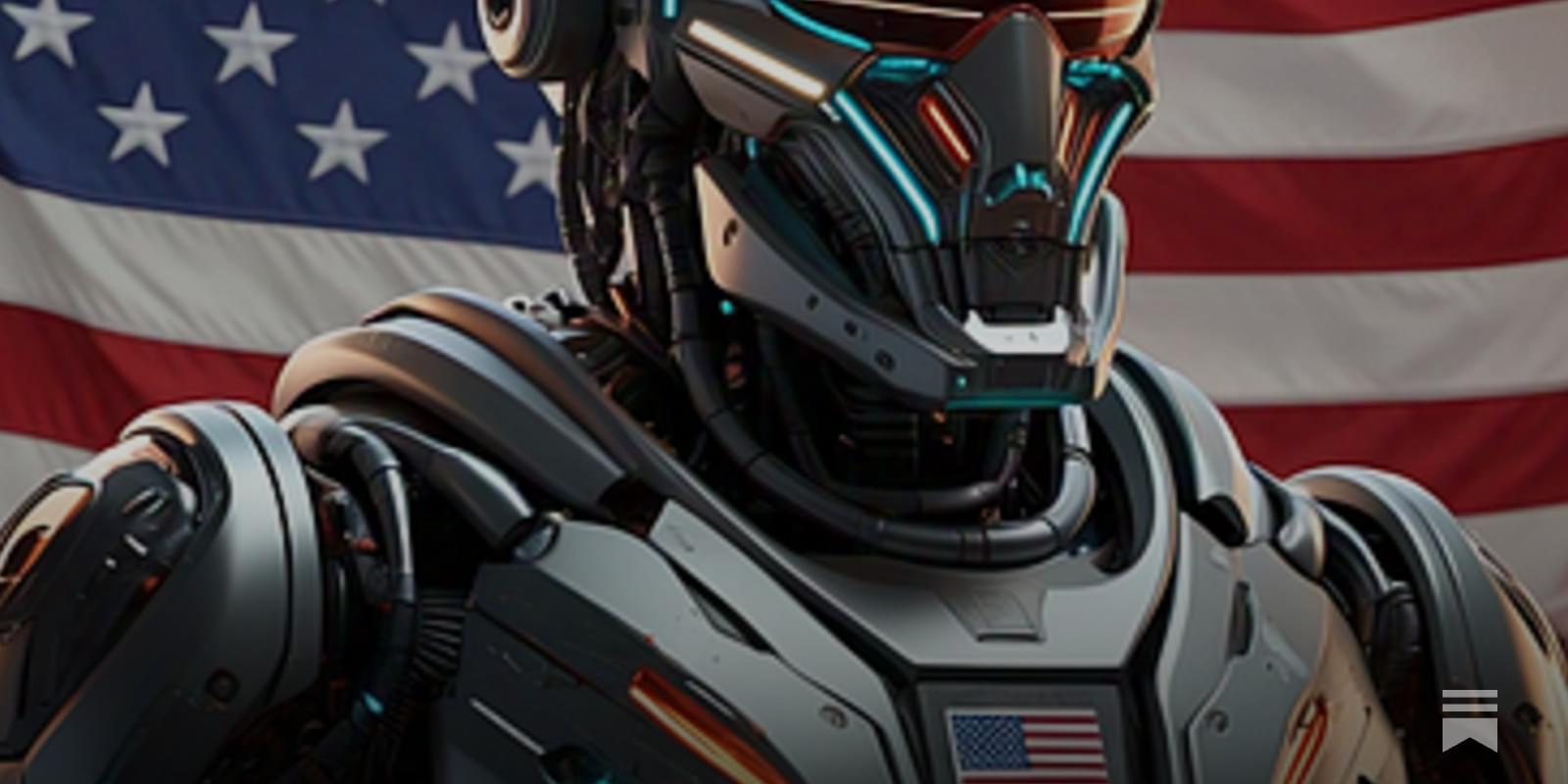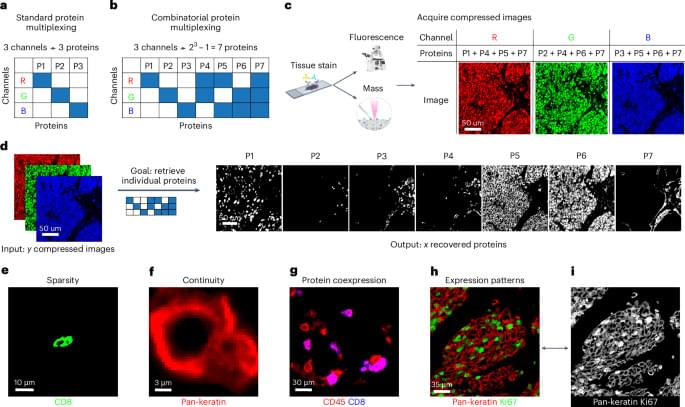In December, OpenAI announced a partnership with defense tech startup Anduril to deploy advanced AI systems for “national security missions.”



Earthworms often form a cluster, from which they can barely free themselves. A similarly active, writhing structure forms when the tentacles of lion’s mane jellyfish become entangled. Robotic grippers utilize this principle by using multiple synthetic flexible arms to grip and move objects. And such interlinked self-propelled filaments can also be found at the smaller micrometer scale, for example in a biological cell.

How do you intuitively know that you can walk on a footpath and swim in a lake? Researchers from the University of Amsterdam have discovered unique brain activations that reflect how we can move our bodies through an environment.
Published in Proceedings of the National Academy of Sciences, the study not only sheds new light on how the human brain works, but also shows where artificial intelligence is lagging behind. According to the researchers, AI could become more sustainable and human-friendly if it incorporated this knowledge about the human brain.
When we see a picture of an unfamiliar environment—a mountain path, a busy street, or a river—we immediately know how we could move around in it: walk, cycle, swim or not go any further. That sounds simple, but how does your brain actually determine these action opportunities?
I honestly don’t know how I should be educating my kids. A.I. has raised a lot of questions for schools. Teachers have had to adapt to the most ingenious cheating technology ever devised. But for me, the deeper question is: What should schools be teaching at all? A.I. is going to make the future look very different. How do you prepare kids for a world you can’t predict?
And if we can offload more and more tasks to generative A.I., what’s left for the human mind to do?
Rebecca Winthrop is the director of the Center for Universal Education at the Brookings Institution. She is also an author, with Jenny Anderson, of “The Disengaged Teen: Helping Kids Learn Better, Feel Better, and Live Better.” We discuss how A.I. is transforming what it means to work and be educated, and how our use of A.I. could revive — or undermine — American schools.
00:00 Intro.
03:03 The future of education?
11:20 Modes of engagement.
17:27 Personalizing education.
26:25 The case for A.I. in schools.
35:09 Who gets left behind?
46:07 How A.I. can increase equity.
49:35 Becoming more human.
55:54 Willpower, literacy, and regulation.
01:01:10 Advice for parents.
01:05:20 Book recommendations.
In this in-depth interview, Joscha Bach shares his insights into AI: what it illuminates about consciousness, how it will develop, and what it means for humanity.
Is AI our only chance at achieving real understanding?
With a free trial, you can watch our full archive of Joscha Bach’s talks and debates at https://iai.tv/home/speakers/joscha-b… Introduction 00:08 What is Artificial General Intelligence, and how far away are we from creating it? 01:08 Do you consider AI humanlike now? 02:43 Why do you defend a computational perspective? 03:44 Is AI the method for the universe to understand itself? 04:26 How is AI transforming society now, and how will it transform society in the next few years? 05:20 Do you think we have the capacity to reconceive how our institutions will function in light of these changes? 06:17 How could AI help us solve the climate crisis, when our biggest problem is inaction? 08:24 Have we become less critical, as a species? 10:40 Would you agree that social media has been detrimental to our society? 12:58 How do you think AGI will be realised? 18:46 What are the differences between evolved systems and designed systems? 20:31 What did you think of the infamous open letter about AI safety? 24:24 How can we solve AI’s misalignment to human values? 25:43 Do you have hope for the future? 27:33 Do you think it’s possible to build a machine that understands? 30:32 Do you think that we are living in base reality? Join cognitive scientist and AI researcher Joscha Bach in this exclusive interview on the limits, risks, and future of AI. From the potential of Artificial General Intelligence to the alignment problem and the fundamental ways AI learns differently from humans, Bach explores whether AI might one day grasp reality on a deeper level than we can. He also examines the systemic failures of institutions in tackling the climate crisis and the COVID-19 pandemic, arguing that the internet’s potential for collective intelligence remains largely untapped. Might AI help us overcome these challenges, or does it merely reflect our own limitations? Interviewed by Darcy Bounsall. #ai #agi #artificialintelligence #artificialgeneralintelligence #consciousness #computerscience Joscha Bach is a cognitive scientist, AI researcher, and philosopher whose research aims to bridge cognitive science and AI by studying how human intelligence and consciousness can be modelled computationally. The Institute of Art and Ideas features videos and articles from cutting edge thinkers discussing the ideas that are shaping the world, from metaphysics to string theory, technology to democracy, aesthetics to genetics. Subscribe today! https://iai.tv/subscribe?utm_source=Y… For debates and talks: https://iai.tv For articles: https://iai.tv/articles For courses: https://iai.tv/iai-academy/courses.
00:00 Introduction.
00:08 What is Artificial General Intelligence, and how far away are we from creating it?
01:08 Do you consider AI humanlike now?
02:43 Why do you defend a computational perspective?
03:44 Is AI the method for the universe to understand itself?
04:26 How is AI transforming society now, and how will it transform society in the next few years?
05:20 Do you think we have the capacity to reconceive how our institutions will function in light of these changes?
06:17 How could AI help us solve the climate crisis, when our biggest problem is inaction?
08:24 Have we become less critical, as a species?
10:40 Would you agree that social media has been detrimental to our society?
12:58 How do you think AGI will be realised?
18:46 What are the differences between evolved systems and designed systems?
20:31 What did you think of the infamous open letter about AI safety?
24:24 How can we solve AI’s misalignment to human values?
25:43 Do you have hope for the future?
27:33 Do you think it’s possible to build a machine that understands?
30:32 Do you think that we are living in base reality?
Join cognitive scientist and AI researcher Joscha Bach in this exclusive interview on the limits, risks, and future of AI. From the potential of Artificial General Intelligence to the alignment problem and the fundamental ways AI learns differently from humans, Bach explores whether AI might one day grasp reality on a deeper level than we can. He also examines the systemic failures of institutions in tackling the climate crisis and the COVID-19 pandemic, arguing that the internet’s potential for collective intelligence remains largely untapped. Might AI help us overcome these challenges, or does it merely reflect our own limitations?
Interviewed by Darcy Bounsall.

PricewaterhouseCoopers (PwC) told 1,500 U.S. employees on Monday that their roles were eliminated with immediate effect—about 2 percent of its national headcount. In the company-wide e-mail obtained by industry blog Going Concern, leadership cited “historically low attrition” and a need to “align the firm for the future.” Publicly, a spokesperson framed the move as a […]
Good channel here.
The future of human longevity just got a $500billion booste thanks to Trump’s bold new AI vision! In this video, we explore the recently announced Stargate AI Infrastructure Project—a staggering $500 billion initiative unveiled by President Donald Trump on January 21, 2025, alongside tech titans OpenAI, Oracle, and SoftBank. Designed to build colossal data centers and supercharge AI development, could this ambitious plan hold the key to curing aging? We dive into the cutting-edge science, the potential of AI to revolutionize healthcare, and how Stargate might reshape humanity’s fight against time. Buckle up for a wild ride into the future!
🔍 What You’ll Discover:
The Stargate Project: Trump’s massive AI infrastructure gamble.
How AI could unlock breakthroughs in aging research.
The players: OpenAI, Oracle, SoftBank, and their bold vision.
The big question: Can this tech triumph over mortality?
JOIN LSN Patreon for exclusive access to news, tips and a community of like minded longevity enthusiasts: https://www.patreon.com/user?u=29506604
🔔 Like, subscribe, and hit the bell for more groundbreaking insights every week! Tell us in the comments: Do you think Stargate could be the key to curing aging? Let’s debate it!

An AI approach developed by researchers from the University of Sheffield and AstraZeneca, could make it easier to design proteins needed for new treatments.
In their study published in the journal Nature Machine Intelligence, Sheffield computer scientists in collaboration with AstraZeneca and the University of Southampton have developed a new machine learning framework that has shown the potential to be more accurate at inverse protein folding than existing state-of-the-art methods.
Inverse protein folding is a critical process for creating novel proteins. It is the process of identifying amino acid sequences, the building blocks of proteins, that fold into a desired 3D protein structure and enable the protein to perform specific functions.

A study in China found that AI can spontaneously develop human-like understanding of natural objects without being trained to do so.